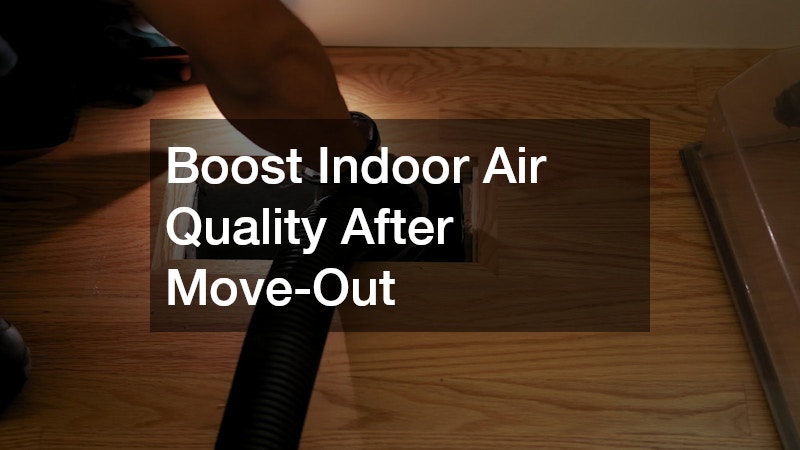For landlords, time truly is money. Every day that a rental unit sits empty is a day of lost income, and those days can quickly add up to weeks or even months if turnovers aren’t handled efficiently. But speed alone isn’t the full picture. A rushed process that leaves behind maintenance issues, cleanliness concerns, or safety hazards can backfire, leading to higher repair costs, unhappy tenants, and potential legal problems.
The most successful landlords understand that the real goal is balance: getting a unit ready for its next occupant as quickly as possible while maintaining high standards. This combination doesn’t happen by accident—it comes from having a proven, repeatable system. That’s where a detailed turnover checklist comes in. By breaking down the process into clear, sequential steps, you eliminate guesswork and minimize wasted time. Instead of scrambling to remember what needs doing or waiting for contractors to be available, you have a clear game plan.
This guide outlines the complete process, from preventive care you should be doing year-round to the final coat of paint before your new tenants move in. Whether you manage one unit or dozens, these quick rental refresh steps will help you reduce vacancy periods, keep your property in peak condition, and maintain happy, long-term tenant relationships.
Keep Your Property in Top Shape
A truly fast turnover starts long before a tenant moves out. If you want a quick rental process every time, the secret is ongoing care—not a frantic scramble after the fact. This means committing to a structured maintenance plan that keeps the property in good condition at all times. Staying proactive also helps you spot patterns, such as recurring leaks or appliance issues, so you can resolve them permanently instead of patching them repeatedly.
The advantage is twofold: you prevent minor issues from snowballing into expensive problems, and you reduce the number of repairs needed during the actual turnover. For example, replacing worn weatherstripping annually prevents drafts and water leaks, while quarterly gutter cleanings prevent costly roof or foundation damage. Even small steps, like lubricating door hinges or tightening loose cabinet hardware, can make a big difference over time.
Regular inspections are crucial. Consider doing a walk-through every six months, documenting the condition of the unit, and addressing anything that could become a future complaint. Replace air filters on schedule, service appliances, and keep an eye out for signs of wear in high-traffic areas. A well-kept property also photographs better for listings, helping you attract new tenants faster.

Efficient Waste Removal for Large-Scale Cleanouts
Even the most conscientious tenants sometimes leave behind more than you’d like. Furniture they no longer want, broken electronics, piles of boxes—it can all create an immediate obstacle to your turnover timeline. In some cases, there may even be hazardous items, like old paint cans or broken glass, that require safe disposal. To keep the process moving, it’s smart to arrange for a quick rental of a roll off dumpster when you expect a large cleanout. Having a plan for waste removal before move-out prevents last-minute chaos.
Having a dumpster on-site right after move-out means debris doesn’t pile up in corners or block hallways. Contractors, cleaners, and maintenance staff can dispose of waste as they go, preventing repeated trips to the landfill and keeping the property safe and organized during the turnover period. A roll off dumpster rental also minimizes clutter that could slow down other critical tasks, like painting or floor repairs.
The trick is to size the dumpster appropriately. Too small, and you’ll waste time waiting for a second one. Too large, and you’ll pay for unused space. Talk to your waste management provider about typical load sizes for similar properties so you can order the right fit. They can often recommend the most cost-effective option based on your project scope and timeline.
Ensure a Spotless Space Between Tenants
First impressions matter, and nothing turns a prospective tenant away faster than a dirty rental. Even if the property is structurally sound, grime, dust, and lingering odors can create the perception of neglect. Stains on carpets, smudges on windows, or leftover pet hair can make a space feel unwelcoming and less cared for, discouraging potential renters before they even step inside.
The best solution is to hire a professional janitorial company for deep cleanings between tenants. These crews specialize in turnover work, which goes far beyond standard housekeeping. They clean inside appliances, scrub grout, wash walls, dust ceiling fans, and sanitize every surface. Many also offer specialized services such as carpet steam cleaning and odor removal treatments, ensuring the property feels fresh and inviting from floor to ceiling.
For landlords focused on a quick rental turnaround, hiring professionals who understand the urgency and specifics of turnover cleaning is essential to keep the schedule on track. A professional cleaning not only makes the unit look and smell fresh but also sets the tone for the tenant’s experience. When they see a spotless home on move-in day, it signals that you’re a landlord who values quality and takes pride in your property.

Prevent Plumbing Backups Before They Start
Few things can derail a smooth turnover faster than a plumbing issue. Even if sinks and tubs seem to be draining fine, hidden blockages could be lurking in the pipes. These clogs might not show themselves until a new tenant is already moved in—and that’s a headache for everyone. In some cases, slow drains or minor backups go unnoticed until they escalate into costly repairs or emergency calls.
A preventive drain cleaning during turnover is an inexpensive step that can save time, money, and frustration later. It removes grease, soap residue, hair, and other buildup that could otherwise cause backups in the near future. Regular maintenance also helps extend the life of your plumbing system, reducing the risk of pipe corrosion or damage caused by clogs.
Clear drains are especially critical for multi-unit properties, where one clogged line can cause problems for multiple tenants. This quick rental preventive step ensures your plumbing system is ready to handle the demands of daily use right from day one. By addressing potential issues proactively, you protect your investment and provide a better experience for your tenants.
Address Hidden Health Hazards Promptly
One of the most overlooked turnover tasks is checking for hidden health hazards like mold. Even a small amount can be a serious problem, both for tenant health and for your property’s value. Mold spores can trigger allergic reactions, respiratory issues, and other health complications, making early detection critical. For a quick rental turnaround, promptly addressing mold issues is essential to avoid delays and ensure the unit is safe and ready for new tenants.
If you detect musty odors, see signs of past water damage, or notice discoloration on walls or ceilings, schedule professional mold cleanups immediately. Specialists will locate the source, remove contaminated materials, and treat the area to prevent recurrence. They may also recommend improvements in ventilation or moisture control to reduce future risks.
This isn’t just about compliance—it’s about protecting your reputation. Tenants who discover mold after moving in may question your commitment to their safety and could demand costly fixes mid-lease. Handling it upfront ensures peace of mind for everyone and helps maintain a healthy living environment that attracts responsible tenants.

Boost Indoor Air Quality After Move-Out
Odors, allergens, and dust can linger in a property long after a tenant leaves, even if the space looks clean. If you want your rental to feel fresh from the moment someone walks in, consider hiring an air duct cleaner before the new lease begins. This quick rental refresh service reaches areas that regular cleaning misses, tackling hidden buildup that affects indoor air quality.
Over time, ducts accumulate dust, pet hair, pollen, and other particles. Cleaning them out improves airflow, removes stale smells, and helps the HVAC system run more efficiently. Better airflow can also reduce energy costs and extend the lifespan of your heating and cooling equipment.
This is a small investment that pays off in tenant satisfaction and energy efficiency. It also gives you another opportunity to advertise “fresh, clean air” as a feature of the property—an attractive selling point for health-conscious renters. Plus, improved air quality helps reduce allergy symptoms, making the home more comfortable for all occupants.
Restore Comfort Systems Before New Tenants Arrive
Comfort is one of the first things tenants notice. If the air conditioning doesn’t cool properly in summer or the heat is unreliable in winter, dissatisfaction sets in quickly. Temperature issues can lead to complaints, early lease terminations, or negative reviews, all of which affect your rental’s reputation.
That’s why HVAC repair and servicing should be a standard part of your turnover checklist. A qualified technician can inspect the system, replace worn parts, check refrigerant levels, and ensure thermostats are accurate and responsive. They can also clean components to improve efficiency and prevent breakdowns during peak seasons.
This preventive approach not only avoids emergency calls but also prolongs the life of your system—saving you money over time while keeping tenants comfortable year-round. For a quick rental turnaround, regular HVAC maintenance is key to ensuring the system runs smoothly without unexpected breakdowns. Regular HVAC maintenance helps maintain consistent temperatures, reduces energy costs, and creates a welcoming environment that attracts and retains quality tenants.
Refresh Worn Surfaces in Kitchens and Bathrooms
Kitchens and bathrooms are the two spaces most likely to influence a tenant’s decision to rent. Even if fixtures are functional, worn or stained grout can make the entire space feel tired and unappealing. Dull or cracked grout also raises concerns about mold or water damage, which can be a major deterrent.
Grout repair is a simple yet powerful update. Fresh grout brightens the room, makes tiles look new, and prevents water from seeping behind walls and floors. It’s a relatively quick job that delivers a high visual impact, especially when paired with thorough cleaning and good lighting. For landlords aiming for a quick rental turnaround, grout repair is an efficient way to enhance appeal without delaying the schedule. Investing in grout repair can significantly boost the overall appeal and perceived cleanliness of these key areas.
Beyond aesthetics, properly maintained grout plays a crucial role in protecting your property’s structural integrity. Damaged or missing grout allows moisture to penetrate behind tiles, potentially leading to mold growth, wood rot, and costly repairs down the line. By addressing grout issues during turnover, you not only enhance the look of your kitchen and bathroom but also safeguard against long-term damage that could disrupt future tenancies.

Test Switches, Fixtures, and Wiring for Safety
Electrical systems are easy to overlook during a turnover, but they’re a critical part of tenant safety and convenience. Having electricians test all switches, outlets, and fixtures ensures everything is in working order before the new lease begins.
They’ll also check safety features like GFCI outlets in kitchens and bathrooms, ensuring they trip correctly to prevent shocks. This small step can prevent inconvenient maintenance calls and demonstrate your commitment to a safe living environment.
Regular electrical inspections can identify hidden issues such as outdated wiring, loose connections, or overloaded circuits that could pose fire hazards or cause appliance malfunctions. Addressing these problems proactively during turnover reduces the risk of emergencies and costly repairs later on. For a quick rental refresh, scheduling these inspections promptly helps keep the process on track. Additionally, ensuring your electrical system meets current codes not only protects your tenants but also helps maintain your property’s value and insurance compliance.
Give Interiors a Fresh, Move-In Ready Look
A fresh coat of paint is often the final step that ties a turnover together. Even if the walls aren’t badly marked, new paint can make the property look brighter, cleaner, and more modern. For landlords aiming for a quick rental turnaround, scheduling painting promptly ensures the unit is move-in ready without delays.
Hiring a professional painting contractor ensures the job is done efficiently and to a high standard, with clean lines and even coverage. Neutral colors are the safest choice, appealing to the widest range of prospective tenants and making the unit easier to market.
Beyond aesthetics, repainting also helps protect walls from wear and tear, sealing minor imperfections and preventing damage from moisture or stains. A well-applied paint job can extend the life of your interior surfaces, reducing the need for frequent touch-ups between tenants.
A quick rental turnaround isn’t achieved by rushing—it’s achieved by preparation, organization, and having the right people in place. With a detailed checklist and reliable contractors, you can move from move-out to move-in without unnecessary delays or oversights.
By handling maintenance year-round, booking services in advance, and addressing potential issues before they escalate, you ensure that each turnover is smooth, predictable, and stress-free.
The end result is more than just faster rentals: it’s happier tenants, stronger lease renewals, and a property that consistently commands top market value. In the long run, that’s the kind of efficiency that pays off far more than simply saving a few days between tenants.



